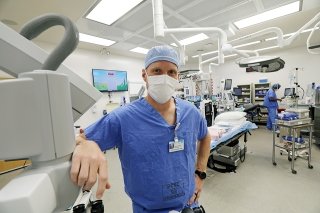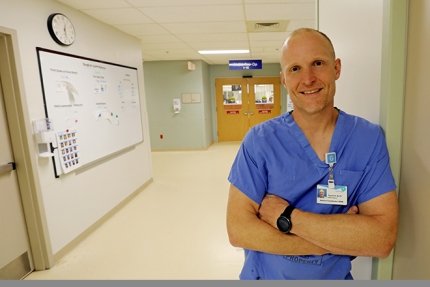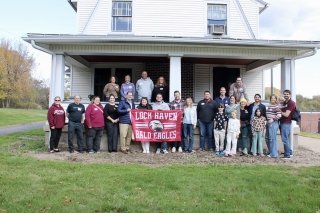Guardian of the Nerves
Bloomsburg
Posted
Audiology alumnus plays critical role in the operating room

The operating room is staged and the team assembled: surgeons, anesthesiologist, and nurses. If this surgery involves the brain or spinal cord, another specialist joins the lineup — an audiologist specialized in intraoperative neuromonitoring.
Commonwealth University-Bloomsburg alumnus Dr. Tyson Hale ’05/’10 Au.D. might be the person monitoring your neural activity to make sure the surgery is going well and has not impacted nerve tissue.
A graduate of CU-Bloomsburg’s Clinical Doctor of Audiology program, Hale is Chief of Surgical Neurophysiology for Geisinger Health System. Geisinger’s primary campus (GMC) is located in Danville. From there Hale oversees a team of about ten professionals across seven campuses who perform intraoperative neurophysiological monitoring (IONM) or simply “neuromonitoring.”

During higher risk surgeries such as spine fusion or brain tumor resection, patients are fitted with electrodes. These electro sensors allow professionals to monitor the integrity of a patient’s neural pathways throughout the procedure and provide real-time feedback to the surgeon and anesthesiologist.
“We’ll stimulate nerves, in the hands for example, and record the signals that are received in scalp,” says Hale. “The ears are a gateway to the mind. Sound waves ultimately go to the inner ear where they move fluid and stimulate nerve cells. You can measure that.”
Hale explains how audiology is a foundation of neuromonitoring, with pioneering audiologists performing auditory brainstem response (ABR) in brainstem surgery approximately 50 years ago before “IONM” was even a field. While audiologists would monitor ABR, surgeons would frequently ask for other neurodiagnostic testing like somatosensory evoked potentials or electromyography for monitoring facial nerve function. Today, these neurodiagnostic tests and many more are included under the field of IONM.
As an undergraduate student at Bloomsburg, Hale was a football player and biology student. “I always knew I wanted to do something in the field of healthcare,” says Hale. “I thought about going into medical sales. I took a year off to do construction with my brother, who is a contractor.”
“I had opportunities for other graduate programs and took the tour of the department at Bloomsburg and they talked about the field of neuromonitoring.”
In addition to providing the foundation for Hale’s career, the audiology program is also where he met his wife Kristin, who works in private practice as an audiologist. Together, they live in Bloomsburg and have three girls aged 7, 8, and 12.



